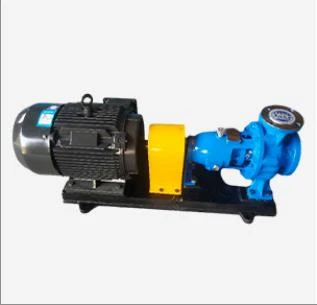Punjabi
- Afrikaans
- Albanian
- Amharic
- Arabic
- Armenian
- Azerbaijani
- Basque
- Belarusian
- Bengali
- Bosnian
- Bulgarian
- Catalan
- Cebuano
- Corsican
- Croatian
- Czech
- Danish
- Dutch
- English
- Esperanto
- Estonian
- Finnish
- French
- Frisian
- Galician
- Georgian
- German
- Greek
- Gujarati
- Haitian Creole
- hausa
- hawaiian
- Hebrew
- Hindi
- Miao
- Hungarian
- Icelandic
- igbo
- Indonesian
- irish
- Italian
- Japanese
- Javanese
- Kannada
- kazakh
- Khmer
- Rwandese
- Korean
- Kurdish
- Kyrgyz
- Lao
- Latin
- Latvian
- Lithuanian
- Luxembourgish
- Macedonian
- Malgashi
- Malay
- Malayalam
- Maltese
- Maori
- Marathi
- Mongolian
- Myanmar
- Nepali
- Norwegian
- Norwegian
- Occitan
- Pashto
- Persian
- Polish
- Portuguese
- Punjabi
- Romanian
- Russian
- Samoan
- Scottish Gaelic
- Serbian
- Sesotho
- Shona
- Sindhi
- Sinhala
- Slovak
- Slovenian
- Somali
- Spanish
- Sundanese
- Swahili
- Swedish
- Tagalog
- Tajik
- Tamil
- Tatar
- Telugu
- Thai
- Turkish
- Turkmen
- Ukrainian
- Urdu
- Uighur
- Uzbek
- Vietnamese
- Welsh
- Bantu
- Yiddish
- Yoruba
- Zulu
Telephone: +86 13120555503
Email: frank@cypump.com
ਨਵੰ. . 05, 2024 12:21 Back to list
ah slurry pump
Understanding AH Slurry Pumps An Essential Component in Industrial Applications
Slurry transport is a critical process in various industries, including mining, mineral processing, and waste management. One of the most efficient and widely used solutions for handling slurries is the AH slurry pump. This article explores the design, functionality, applications, and maintenance of AH slurry pumps, highlighting their significance in industrial settings.
What is an AH Slurry Pump?
The AH slurry pump is a type of centrifugal pump specifically designed for pumping abrasive and viscous materials. Characterized by its robust construction and adaptability, the AH pump can efficiently handle fluids with solids content, making it ideal for transporting slurries consisting of liquids and particulates. The pump's name, AH, often refers to its specific model designated by manufacturers, particularly in the mining and mineral processing sectors.
Design Features
The AH slurry pump is engineered to withstand harsh operating conditions. Key design features include
1. Heavy-Duty Materials The wetted parts of the pump, which come into direct contact with slurries, are often made from high-chrome alloys or elastomers resistant to wear and corrosion. This durability prolongs the life of the pump in abrasive environments.
2. Sealed Bearings To protect against the ingress of slurry and dust, AH pumps often incorporate sealed bearings that ensure smooth and reliable operation, reducing the risk of mechanical failure.
3. Modular Design Many AH slurry pumps feature a modular design allowing for easy maintenance and parts replacement, which minimizes downtime in industrial operations.
4. Variable Configuration Depending on the specific application, these pumps can be configured in different orientations and sizes to optimize performance for various types of slurries.
Applications of AH Slurry Pumps
AH slurry pumps are widely utilized across several industries due to their versatility. Key applications include
ah slurry pump

- Mining and Mineral Processing In these sectors, AH pumps are essential for transporting slurries of mineral ore, tailings, and process water. Their ability to handle coarse particles without compromising performance makes them an industry standard.
- Wastewater Treatment In wastewater treatment facilities, AH pumps are used to move sludge and other solids-laden liquids. Their robust design ensures they can handle the variable consistencies commonly found in wastewater.
- Construction AH pumps also play a significant role in construction applications, such as dewatering operations and transporting cement slurries.
Maintenance Best Practices
To ensure optimal performance and longevity of AH slurry pumps, regular maintenance is paramount. Here are some best practices
1. Routine Inspection Regularly check for signs of wear or damage on the pump components, particularly the impeller and casing. Early detection of issues can prevent costly repairs.
2. Bearing Lubrication Ensure that bearings are adequately lubricated to prevent overheating and excessive wear.
3. Seal Integrity Checks Examine seals and gaskets for any signs of wear or leakage. Replacing them promptly can prevent contamination and damage to the pump.
4. Operational Monitoring Monitor the pump's operational efficiency through pressure and flow rate measurements. Deviations from normal values may indicate underlying issues.
Conclusion
AH slurry pumps are indispensable in various industrial applications, where the safe and efficient transportation of slurries is crucial. Understanding their design, functionality, and maintenance needs can help operations maximize efficiency and minimize downtime. With proper care and attention, AH slurry pumps can significantly contribute to the success of industrial processes, making them a wise investment for businesses in demanding environments.
-
High-Efficiency Submersible Effluent Pump for Sewage & Wastewater Solutions
NewsJul.08,2025
-
High Quality CH Warman Slurry Pump Factory - Leading Horizontal Slurry Pump Supplier
NewsJul.08,2025
-
Hot Sale Chemical Circulating Pump – Efficient & Durable Slurry Circulating Pump Solutions
NewsJul.08,2025
-
High-Efficiency Submersible Dredge Pump for Sand & Gravel Durable Dredge Slurry Pumps Solutions
NewsJul.07,2025
-
Wholesale Slurry Pump Impeller Supplier – High-Quality & Efficient Pump Parts for Enhanced Performance
NewsJul.07,2025
-
High-Efficiency Water Submersible Pumps Reliable Water Pump for Potable Water Supply
NewsJul.06,2025










